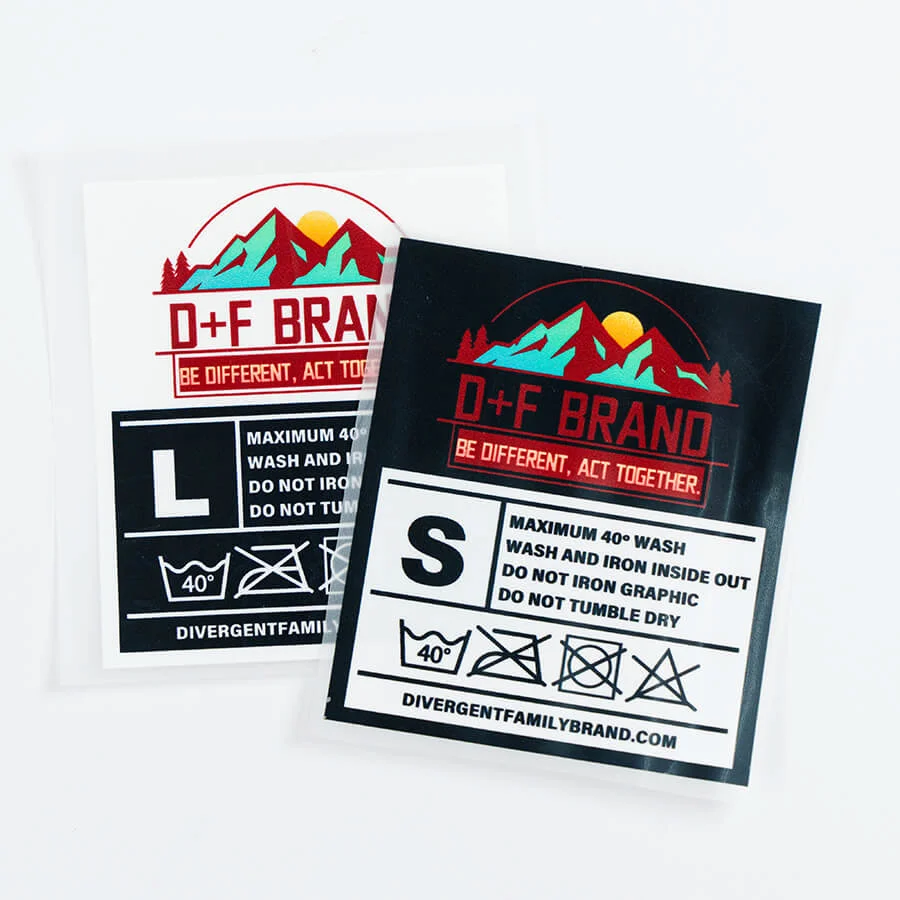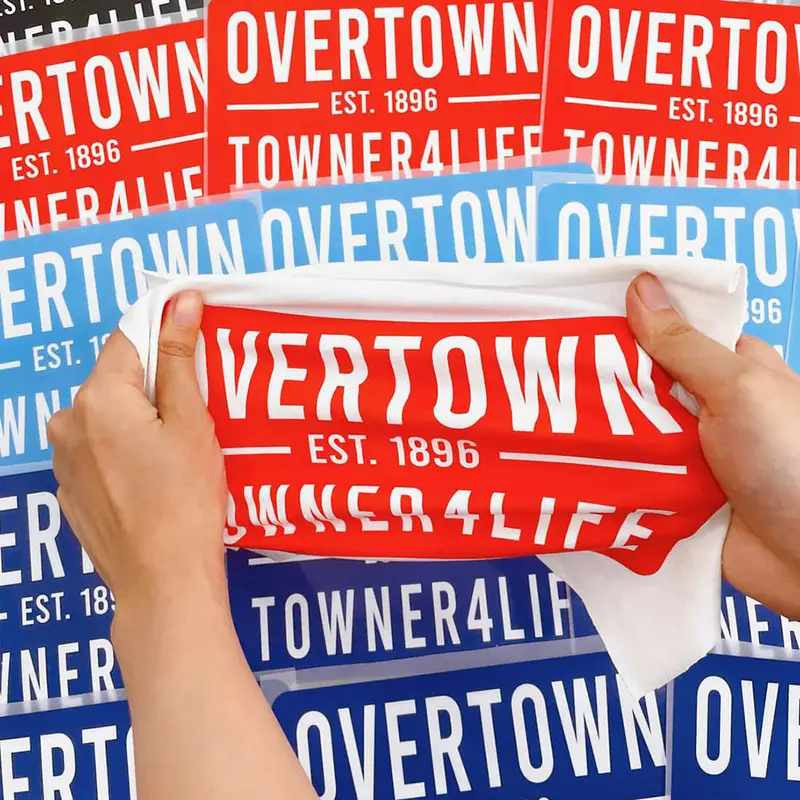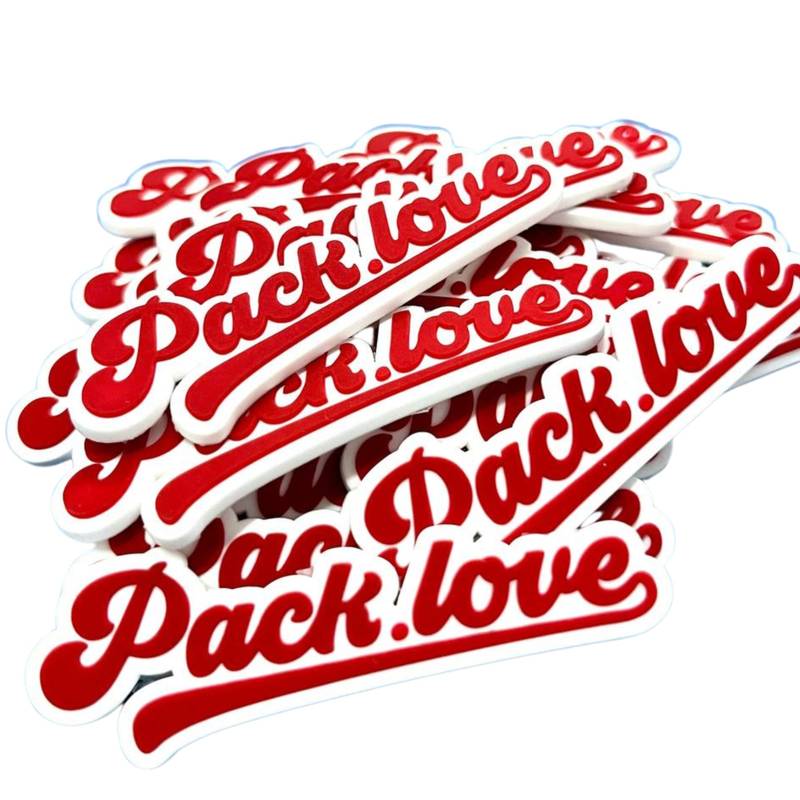History of a Logo: Evolution and Impact – Packlove
Logos are more than just symbols; they’re powerful visual representations of brand identity. From ancient civilizations to the digital age, the logo has evolved, becoming a critical component in how businesses connect with customers. This article delves into the fascinating history of logos, tracing their evolution from early symbols to modern-day brand identifiers. We’ll examine design principles, explore the impact of technological advancements, and ultimately, empower you to create a logo that not only resonates with your brand but also fosters recognition, trust, and success.
1. Ancient Roots: The precursors to modern logos
1.1 Symbols as a form of identification in ancient civilizations
Long before the sleek and sophisticated logos we recognize today, the practice of using symbols for identification and branding was already deeply ingrained in ancient societies. Consider ancient Egypt, where hieroglyphics, far more than just decorative script, served as a powerful system of visual communication and identity.
These intricate symbols, often depicting deities, creatures of the natural world, or everyday objects, were not merely artistic expressions. They functioned to denote specific lineages, family groups, and even individual status. Similarly, in Mesopotamia, the use of seals and stamps, adorned with carefully crafted designs, played a crucial role in establishing ownership and differentiating individuals or entities within the community.
These early civilizations possessed a keen understanding of the impact of visual representation. They harnessed the power of symbols to effectively communicate identity and project authority. This foundational understanding of symbolism is, in essence, the very cornerstone upon which modern logo design is built.

1.2 The significance of Egyptian hieroglyphics
Around 3200 BC, Egyptian hieroglyphics emerged as a sophisticated system of writing and visual communication. These intricate pictorial symbols, depicting objects, animals, and deities, were more than just a method of recording; they were also a crucial tool for establishing visual identity.
The Egyptians’ use of grids to standardize the drawings, allowing for a consistent style and visual vocabulary, foreshadowed modern logo design principles. This early concept of consistent visual representation across various contexts demonstrates a remarkable understanding of the importance of a clear, easily recognizable visual identity, a concept that still underlies effective branding today.
The use of grids for standardized drawings in hieroglyphics represents a crucial early step in the development of visual communication and a structured approach to visual identity.
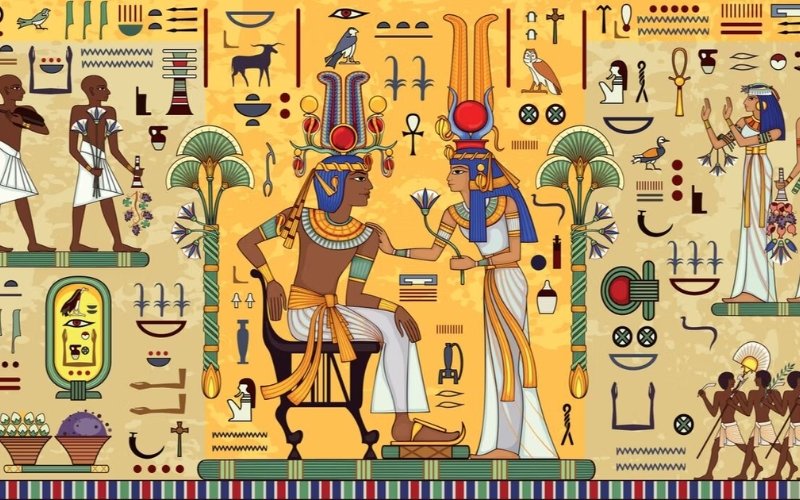
1.3 Etymology: Understanding “logo”
The word “logo,” fundamental to modern branding, originates from the ancient Greek. “Lógos,” meaning “word” or “speech,” and “túpos,” signifying “mark” or “imprint,” combine to form the term. This etymology highlights the crucial connection between the visual representation (the logo) and the underlying message or identity it signifies.
The logo is more than just a graphic; it’s a visual embodiment of a brand’s communication and intent. This dual heritage underscores the profound significance of visual representation in the evolution of branding.
2. Medieval times: The emergence of proto-logos
2.1 The rise of heraldry and coats of arms
Heraldry, a system of symbolic imagery, emerged prominently in the mid-12th century. Initially, coats of arms served a crucial function on the medieval battlefield: clear identification amidst the chaos of combat. Distinguished by unique combinations of colors, animals, and objects, these symbols allowed soldiers to readily distinguish friend from foe.
This practical necessity was the driving force behind their early development. However, over time, heraldry transcended its purely functional role. Coats of arms evolved into powerful symbols of family lineage and social status. Their complexities came to reflect a family’s history, achievements, and social standing, creating a visual hierarchy that defined medieval society.
The unique designs communicated not just individual identity but also the intricate web of social relationships and power dynamics of the time. This evolution from simple battlefield identifiers to complex status symbols laid the groundwork for the modern understanding of visual identity and its role in branding.
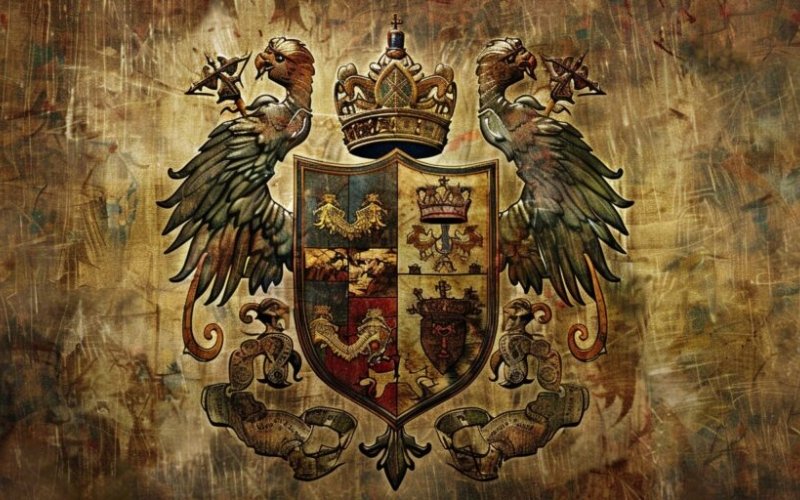
2.2 Shop signs: Communicating to an illiterate population
In medieval Europe, with a significant portion of the population illiterate, shop signs played a critical role in communication. These signs, often the only way to advertise goods and services to the general populace, relied heavily on visual cues rather than text. The imagery used was highly symbolic and easily understood.
A blacksmith might display a stylized hammer and anvil, a baker a loaf of bread, or a tailor a needle and thread. These instantly recognizable visual representations communicated the trades or goods offered within the shop, making commerce accessible to everyone, regardless of literacy levels.
King Richard II’s 1389 law mandating specific signage for breweries stands as a crucial example of early logo use. This law, requiring specific visual identifiers for breweries, not only regulated the industry but also established a rudimentary system of visual branding, a precursor to the trademarks and logos prevalent today.
The importance of clear, easily understood visual communication in a primarily illiterate society underscores the enduring power of visual imagery in branding and marketing.
3. The printing revolution and the development of logos
3.1 Gutenberg’s impact: The printing press and increased literacy
The invention of Johannes Gutenberg’s printing press around 1440 revolutionized the dissemination of information and had a profound impact on literacy rates. Gutenberg’s mechanical printing process, utilizing movable type, enabled the mass production of books and other printed materials.
This dramatically lowered the cost of printed material, making texts available to a much wider population. Increased access to information led to a surge in literacy rates across Europe, fostering intellectual growth and social change. This technological advancement not only democratized knowledge but also laid the groundwork for the evolution of visual branding and logo design.
As more people learned to read, visual cues and symbols became increasingly important, and the need for visually distinct and easily recognizable brand identifiers began to emerge. The printing press’s contribution to increased literacy and the subsequent demand for clear visual communication profoundly influenced the future development of logos and trademarks.

3.2 Early advertising: Logos in newspapers
As newspapers emerged in the 17th century, a nascent advertising industry arose. Newspapers, seeking to differentiate themselves and attract readers, began incorporating logos into advertisements. These early logos often represented the publication or the advertiser in a visual form, such as a stylized emblem or a symbolic image.
This development marked the start of a relationship between visual representation and brand recognition, creating visual cues to distinguish one publication or product from another. The use of logos in print advertisements represented an early and important step in the development of modern marketing strategies, demonstrating the power of visual identity in attracting attention and building brand recognition in a burgeoning information marketplace.

3.3 The advent of color printing: A visual revolution
The development of color printing in the 19th century brought a visual revolution, profoundly impacting the world of logos and branding. The ability to reproduce color images and intricate designs in print opened new avenues for creating more eye-catching and memorable logos.
This new technology allowed for a richer, more dynamic visual communication, moving beyond simple black and white illustrations. Color printing allowed for the exploration of color theory and the psychological impact of specific color combinations.
The use of vibrant and evocative colors could now be integrated into logo designs, potentially fostering stronger brand associations and memorable visual representations.
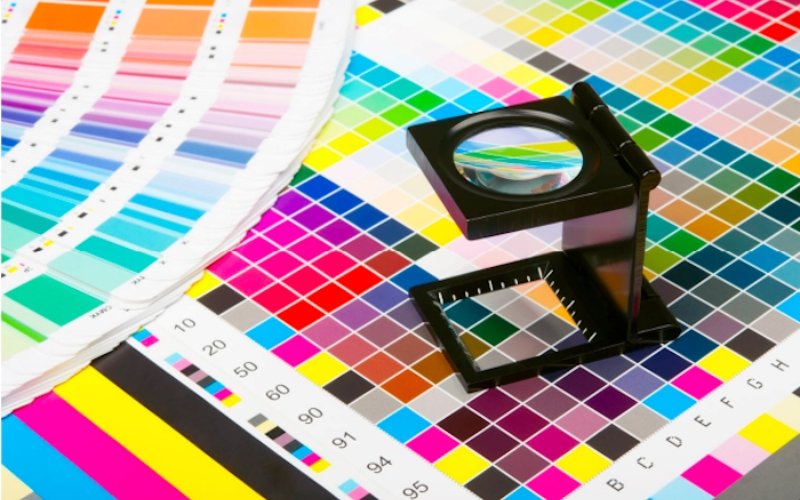
3.4 Iconic logos of the 19th century
The 19th century witnessed the emergence of iconic logos that continue to resonate today. One prominent example is the Coca-Cola script logo, introduced in 1885. Its flowing, elegant script, often associated with a sense of nostalgia and classic American style, remains a powerful symbol of the brand.
Another enduring logo is that of Levi Strauss & Co., introduced in 1892. The simple yet sturdy design of their logo, incorporating their famous blue and red tag, effectively communicates durability and reliability, qualities central to their brand identity.
These 19th-century examples demonstrate the crucial link between visually distinctive logos and enduring brand recognition. Their design elements, seemingly straightforward, successfully capture the spirit of the era and resonate with audiences across generations, highlighting the enduring power of visual identity.

4. The 20th century: Logos as art and brand identity
4.1 The Paul Rand Revolution: IBM and the Shift to Intentional Design
Paul Rand’s 1956 IBM logo stands as a pivotal moment in logo design history. It marked a significant shift from purely utilitarian logos to intentionally designed symbols that directly represented brand identity. Prior to Rand’s work, many logos were functional but lacked a strong symbolic component.
Rand’s design for IBM, a simple and clean sans-serif typeface, powerfully conveyed modernity, reliability, and innovation—essential aspects of IBM’s brand. This move toward a more intentional and symbolic logo design paved the way for a new era in branding, demonstrating that a logo could be more than just a nameplate.
Rand’s work, alongside designers like Milton Glaser, Chermayeff & Geismar, and Saul Bass, significantly shaped the modern understanding of how logos should communicate brand values and identity.

4.2 Exploring diverse logo styles: Chase, NASA, and “I ♥ NY”
The sheer variety of logo styles that have emerged throughout the 20th and 21st centuries becomes strikingly clear when we consider examples like the Chase logo, the NASA insignia, and the “I ♥ NY” emblem. The Chase bank logo, for instance, adopts an abstract and minimalist approach, successfully projecting an image of sophistication and steadfastness. Its design, often characterized by geometric forms and uncluttered lines, subtly communicates a sense of contemporary thinking, reliability, and the extensive range of financial services the institution provides.
In contrast, the NASA logo, with its distinctly patriotic color palette and stylized depictions of rockets or spacecraft, immediately evokes themes of national pride, pioneering scientific discovery, and ambitious goals. The deliberate use of red, white, and blue within the design powerfully associates the organization with American innovation and the boundless frontier of space exploration.
Shifting gears again, the “I ♥ NY” logo, with its uncomplicated yet impactful graphic of a heart paired with the state abbreviation, functions as an unambiguous and celebratory expression of New York’s captivating charm and appeal to visitors.
The design elements directly convey a message of affection, vibrancy, and the enticing nature of the destination. These diverse examples, though vastly different in their execution, effectively illustrate how carefully considered design choices can powerfully communicate a brand’s unique identity and core message.
4.3 The rise of computer-aided design: Democratizing logo creation
The introduction of computer-aided design (CAD) software in the 1970s dramatically altered the landscape of logo design. Previously, designing complex or intricate logos required specialized skills and significant time investment in traditional methods.
The emergence of digital design tools democratized logo creation, making it accessible to a wider range of designers and even individuals. This accessibility dramatically lowered the barrier to entry, empowering individuals and smaller businesses to create professional-quality logos with previously unimaginable ease.
The availability of these tools and the subsequent digital era’s acceleration significantly altered how logos were developed, and it broadened the pool of creators, leading to a wider range of styles and ideas in the world of branding.
5. The digital era: Logos in a dynamic world
5.1 Adapting to the Internet: The Rise of Dynamic Logos
The rise of the internet profoundly impacted logo design, demanding adaptability to various screen sizes and formats. Traditional logos, often designed for print or static applications, needed to evolve to effectively function across websites, social media platforms, and mobile devices.
This necessitated the emergence of dynamic and responsive logos, capable of seamlessly adjusting to different screen resolutions and formats. MTV, for instance, exemplifies this shift. Their logo, through the years, has maintained core elements but adapted its design for various media.
The flexibility needed to showcase the brand across different screens and platforms highlights the evolving relationship between visual identity and the digital age. As visual representation became increasingly intertwined with online interactions, logos had to adapt to meet this changing landscape.
Responsive design, crucial for modern branding, became essential, showcasing the need for logos to not just be visually appealing but also practically usable across multiple formats.
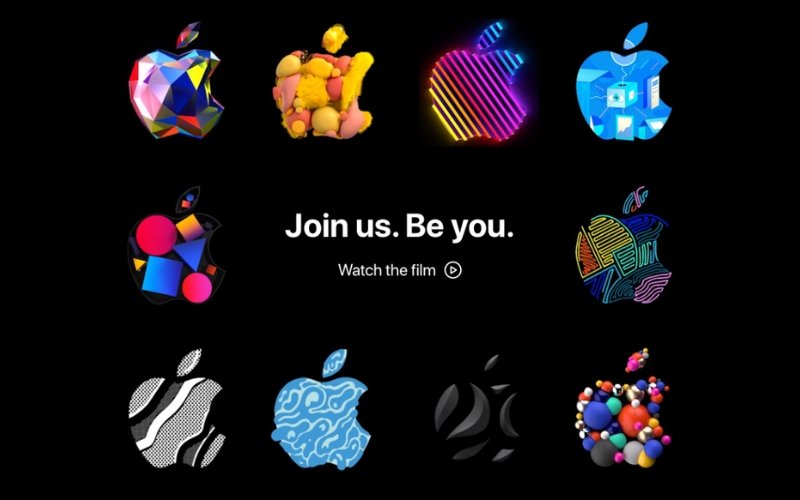
5.2 From skeuomorphism to flat design: The evolution of digital aesthetics
Early internet design often featured 3D effects and skeuomorphic elements in logos, mimicking real-world objects. These designs aimed to create a familiar and tangible experience in the nascent digital realm. However, as the web matured, a shift toward flat, minimalist designs emerged.
This trend, driven by a desire for simplification and efficiency, favored clean lines, simple shapes, and a reduced reliance on complex 3D effects. Google’s logo, with its flat, primary color palette, epitomizes this shift. The minimalist aesthetic not only enhances the logo’s legibility across various screen sizes but also communicates a sense of clarity, modernity, and reliability.
This evolution from skeuomorphism to flat design reflects a broader trend in digital aesthetics, signifying a move away from imitation towards a more streamlined, efficient visual language.
5.3 The power of simplicity: Recognizability in the digital age
In the digital age, simplicity and recognizability are paramount in logo design. Modern logos frequently stand alone, representing a brand without explicitly featuring the brand name. This reliance on a memorable visual cue, instantly recognizable even without accompanying text, is crucial for brand recognition in a crowded online marketplace.
The Nike swoosh, the Apple logo, and the McDonald’s Golden Arches, for instance, are instantly recognizable globally, demonstrating the enduring power of a simple, iconic design. This emphasis on simplicity allows logos to transcend language barriers and cultural nuances, forging a universal connection with audiences.
Timelessness is also a key element, as these instantly identifiable marks are less susceptible to stylistic trends. A well-designed, simple logo contributes to brand identity and memorability, reinforcing a brand’s essence in a rapid-fire digital environment.
6. The future of logos: Trends and technologies
6.1 Brand essence: Communicating through visuals
Logos are powerful tools for communicating brand essence, fostering a visual connection between brands and consumers. They encapsulate a brand’s core values and personality, resonating with consumers on a subconscious level.
A well-designed logo effectively communicates a brand’s identity and evokes specific emotions and perceptions. For example, a sophisticated, minimalist logo might convey a sense of elegance and precision, while a vibrant, bold logo might project energy and innovation.
This visual communication becomes integral to a brand’s identity. The logo is more than just a visual element; it’s a powerful component of brand perception, fostering a lasting connection with the intended audience. A memorable and impactful logo directly influences how a brand is perceived, establishing a lasting and emotive connection with consumers.

6.2 The impact of image recognition and logo detection
The burgeoning field of image recognition and logo detection technology is poised to significantly influence the future of logo design. As these technologies advance, they will likely reshape how logos are created, used, and perceived.
The ability to quickly and accurately identify logos through images will impact branding strategies and marketing efforts. This technology could facilitate automated processes for logo identification, enabling more sophisticated tracking and analysis of brand presence across various media. As a result, the future of logo design may see a focus on creating logos more easily recognizable by machine algorithms, alongside their traditional human appeal.
This evolving interaction between technology and visual identity will likely accelerate the evolution of logo design, necessitating adaptability and innovation. The need for logos to be not only memorable to humans but also effectively detectable by machines will undoubtedly shape future design trends and strategies.
6.3 Brand identity: Beyond the logo
While a logo is undeniably a crucial element of brand communication, a truly robust brand identity extends far beyond the visual representation of a logo. It encompasses a holistic strategy that permeates every facet of a company’s interaction with its audience.
This includes not just the logo, but also the overall brand messaging, customer experience, and the values a company espouses. A strong brand identity is built on consistency across all these elements, ensuring a cohesive narrative and solidifying a brand’s perception in the marketplace.
It’s more than just a logo; it’s the complete customer journey and the values reflected in everything the company does. Effective marketing strategies often stem from a solid brand identity. The history of a logo reflects the history of the company.
7. FAQs about history of a logo
7.1 What is the oldest known logo?
While not a logo in the modern sense, the Bass Brewery red triangle trademark, registered in 1876, is considered one of the oldest registered trademarks that functioned like a logo. Some may argue ancient symbols used by civilizations could also be considered precursors to logos.
7.2 How did the first company logos appear?
The first company logos, as we understand them today, started appearing in the late 19th century, fueled by industrialization, mass production, and the rise of advertising. Brands needed ways to differentiate their products in an increasingly crowded marketplace. The Bass Brewery logo and the Coca-Cola logo are prime examples of this era.
7.3 Who is the most famous logo designer?
Paul Rand is widely regarded as one of the most influential logo designers in history. His work for brands like IBM, UPS, and ABC revolutionized logo design, emphasizing simplicity and symbolic meaning. Other notable designers include Saul Bass, Milton Glaser, and Walter Landor.
7.4 How has technology impacted logo design?
Technology has drastically impacted logo design. From the printing press enabling mass production of printed materials to computer-aided design software democratizing the design process, technology has continuously shaped how logos are created and used. The internet and digital devices further necessitated responsive and adaptable logos.
7.5 What are the key principles of effective logo design?
Effective logo design principles include simplicity, memorability, versatility, appropriateness, and timelessness. A good logo should be easily recognizable, adaptable to different mediums, relevant to the brand, and able to stand the test of time.
7.6 What Makes a Logo Timeless?
Timeless logos often possess qualities of simplicity, strong visual appeal, and a connection to core brand values. They avoid trendy design fads and focus on enduring principles of design that transcend specific eras.
8. Packlove – Providing service for logo design and printing
8.1 Custom design and printing services
Packlove provides custom design and printing services, specializing in creating unique packaging solutions that help businesses effectively build their brand identity. We offer a wide range of products tailored to your specific needs.
8.2 Our Products
Packlove offers a suite of products designed to elevate your brand’s presentation. The Value Booster Kit is a curated collection of packaging essentials, streamlining your brand’s visual identity. Woven Labels provide a high-quality, durable touch to clothing and textiles, creating a professional finish.
Heat Transfer Labels are versatile, adhering to various fabrics for branding apparel, and Rubber Labels offer a rugged, weather-resistant solution, perfect for outdoor gear. Zipper Bags provide reusable and customizable packaging options, enhancing product presentation and offering practical, branded solutions for customers.
Finally, Poly Mailers offer a branded and secure shipping option, protecting and showcasing your products during transit. Each product contributes to a cohesive brand identity and enhances the overall customer experience.
8.3 Contact Us
Contact Packlove today to explore custom design and printing solutions that elevate your brand. Visit our website at https://mypacklove.com/ or email us at [email protected].
Read more:
- Iron Patch onto Hat: Easy Guide & Tips for Perfect Placement
- How to Address Poly Mailers for USPS, UPS; FedEx (Correctly)
- Can You Put Poly Mailers in a Mailbox? Size and Shipping Guide
From ancient symbols to modern-day icons, this article highlights the fascinating evolution of logos throughout history. This journey underscores the vital role of visual communication in branding. A well-designed logo is more than just an image; it’s a powerful tool for brand recognition, building trust, and ultimately, fostering success. The enduring principles of simplicity, memorability, and adaptability in logo design remain crucial regardless of the ever-changing technological landscape. As we look towards the future, the power of visual communication continues to shape the way brands connect with consumers, and a thoughtful approach to logo design remains an integral part of that process.


